Yamaha WaveRunners are known for their reliability, durability, and high performance. However, like any personal watercraft (PWC), they require proper care to ensure long-term performance. Whether you use your WaveRunner for recreation, fishing, or adventure riding, regular maintenance is essential to keep it running smoothly and avoid costly repairs. Below is a comprehensive guide to maintaining your Yamaha WaveRunner for peak performance year after year.
1. Follow the Break-In Period Properly
The break-in period is essential for ensuring long-term engine performance and durability when purchasing a new Yamaha WaveRunner. Rushing this process can lead to premature wear, reduced efficiency, and potential mechanical issues.
To protect your investment, follow the break-in guidelines outlined in the owner’s manual. Generally, this means gradually increasing throttle use over time rather than immediately pushing the engine to its limits. Avoid sustained high speeds early on and focus on varied throttle usage to allow the engine components to seat correctly.
Properly breaking in your WaveRunner will help maintain fuel efficiency, engine longevity, and overall performance for years to come.
2. Use High-Quality Fuel and Oil
Fuel and oil quality directly affect your WaveRunner’s performance and longevity.
- Fuel: Avoid ethanol-heavy fuels as they absorb moisture, leading to engine damage.
- Oil: If your WaveRunner is a 4-stroke model, always use Yamalube 4M or another high-quality marine-grade oil that meets Yamaha’s specifications. Using non-marine oil can lead to increased wear and tear.
To prevent fuel degradation, especially when storing your WaveRunner, add a fuel stabilizer such as Yamalube Fuel Stabilizer & Conditioner.
3. Flush the Engine After Every Ride
Saltwater, sand, and debris can accumulate in the cooling system, causing clogs and corrosion. To prevent this, flush your WaveRunner’s engine after every ride, especially after saltwater use.
How to flush the engine:
-
Attach a garden hose to the flush port (refer to your owner’s manual for location).
-
Start the engine first before turning on the water.
-
Let the engine run for 2-3 minutes while flushing to remove contaminants.
-
Turn off the water before shutting off the engine.
Warning: Never turn on the water before starting the engine, as this can force water into the engine, causing hydrolock and severe damage.
**Pro Tip** If you ride your WaveRunner on saltwater bodies, a high-quality salt remover, like Salt Off, is required to complement fresh water during the flushing process.
4. Wash and Dry the Exterior Regularly
Dirt, grime, and salt deposits can damage the hull and corrode metal components over time.
- After every ride, rinse the entire WaveRunner with fresh water.
- Use mild boat soap and a soft brush to clean the hull, intake grate, and ride plate.
- Dry the WaveRunner thoroughly to prevent water spots and corrosion.
- Apply Yamaha Silicone Spray or a marine-grade protectant to exposed metal parts to prevent rust.
5. Inspect and Maintain the Battery
A dead battery can leave you stranded on the water, so regular battery maintenance is crucial.
- Keep the battery fully charged when not in use. A trickle charger or battery maintainer can help.
- Check for corrosion on battery terminals. Clean with a wire brush if necessary.
- During the off-season, store the battery in a cool, dry place, and disconnect it if it is not used for long periods.
6. Check and Maintain the Jet Pump System
The jet pump propels your WaveRunner, so keeping it free of debris is essential.
- Inspect the intake grate and impeller before and after each ride for debris such as seaweed, fishing line, or small rocks.
- If you notice vibrations or loss of power, the impeller may be damaged and require servicing.
- Lubricate the pump bearings with Yamaha Marine Grease per the owner’s manual.
7. Change the Oil and Filter Regularly (For 4-Stroke Models)
Regular oil changes are essential for keeping the engine properly lubricated and preventing internal wear. To ensure optimal performance and longevity, follow the manufacturer’s recommended oil change intervals outlined in the owner’s manual.
If you're unsure about changing the oil, consider having it serviced by a Yamaha-certified technician to ensure it's done correctly. But, PartsVu’s WaveRunner oil change kits make the job easy.
8. Maintain the Cooling System
Regularly inspect the cooling system for signs of blockage or wear to prevent overheating and ensure optimal performance.
- Check for clogs or debris in the cooling water intake and remove any obstructions.
- Inspect coolant hoses for cracks, leaks, or signs of wear, replacing them as needed.
- After riding in muddy or debris-filled water, flush the system thoroughly to prevent buildup.
Keeping the cooling system clean and in good condition helps maintain engine efficiency and longevity.
9. Monitor and Replace Spark Plugs
Bad spark plugs can cause starting issues, misfires, and poor fuel efficiency.
- Replace spark plugs regularly per manufacturer’s recommendations.
- Check for signs of wear, fouling, or deposits. Dirty plugs should be replaced.
- Use Yamaha-approved spark plugs for best performance.
10. Store Your WaveRunner Properly (Off-Season or Long-Term Storage)
Proper storage is essential if you won’t use your WaveRunner for a while.
- Drain all water from the engine by briefly starting it out of the water and revving it a few times.
- Add Yamaha Fuel Stabilizer to prevent fuel degradation.
- Remove the battery and keep it on a trickle charger.
- Use a Yamaha WaveRunner cover with a breathable marine cover to protect it from dust and UV damage.
- Consider fogging the engine with Yamaha Fogging Oil in cold climates to prevent internal corrosion.
Frequently Asked Questions (FAQ)
Q: How can I improve my WaveRunner’s performance over time?
A: Keeping your WaveRunner in top condition will maximize performance. Here are some extra tips:
- Keep the hull clean to reduce drag and improve speed.
- Use fresh, high-quality fuel to maintain engine efficiency.
- Check and replace spark plugs if performance feels sluggish.
- Regularly inspect and lubricate the jet pump and impeller to ensure smooth acceleration.
Q: Can I leave my WaveRunner in the water for extended periods?
A: While Yamaha WaveRunners are built for marine environments, leaving them in the water for long periods can lead to hull damage, corrosion, and algae buildup. If you must leave your PWC in the water:
- Use a floating dock or lift to keep it out of the water when not in use.
- Rinse and dry it regularly to prevent marine growth.
- Check and grease metal components to prevent rust.
Q: How do I know when to replace the battery?
A: The average lifespan of a WaveRunner battery is 3-5 years, depending on usage and maintenance. Signs you may need a new battery include:
- The engine cranks slowly or not at all.
- The battery won’t hold a charge even after recharging.
- Corrosion or leakage is visible on the terminals.
- The battery voltage is below 12.4V when tested with a multimeter.
To extend battery life, keep it charged, clean the terminals, and store it properly during the off-season.
Q: What’s the best way to transport my WaveRunner safely?
A: Use a properly fitted trailer with secure tie-down straps to prevent movement. Make sure the:
- Trailer lights are working
- Tires are in good condition
- Bearings are greased
Before transporting, remove the drain plugs to prevent water buildup inside the hull.
Final Thoughts on Waverunner Maintenance
By following these maintenance tips, you’ll keep your Yamaha WaveRunner running smoothly for years, ensuring peak performance, reliability, and longevity. If you’re unsure about maintenance tasks, always refer to your owner’s manual or consult a certified Yamaha technician. Enjoy the water and keep your WaveRunner in top shape! PartsVu is always here to help.





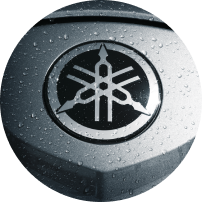
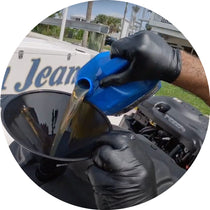

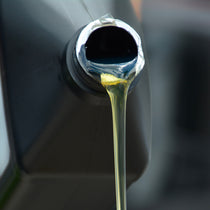

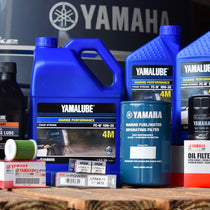
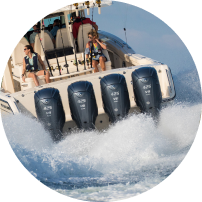

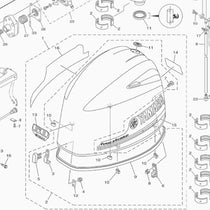









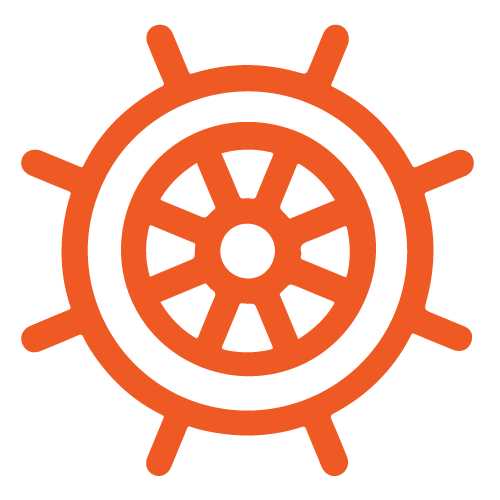

1 comment
This was such a great read, thank you for the information.
———
PartsVu replied:
Thank you Jessica,
we sincerely appreciate you taking the time to read our blog. We hope to keep creating content that our readers find helpful!
Have a great day!
Jessica Zapatero Customer Service Manager 888-625-5460 PartsVu.com Monday – Friday 8:00 am to 5:00 pm
[cid:image001.png@01DC2E06.03DF7590]
———
PartsVu replied:
Jessica,
Thank you for the kind words — we’re glad we could be of service! If there’s anything else you need, don’t hesitate to reach out.
Best Regards, Tyler
You have a new comment from Jessica
Jessica (jzapatero@partsvu.com<mailto:jzapatero@partsvu.com>) wrote a comment about your blog post Ten Tips for Maintaining Yamaha WaveRunners for Long-Term Performance<https://8b0eee.myshopify.com/blogs/boating-resources/ten-tips-for-maintaining-yamaha-waverunners-for-long-term-performance>:
“This was such a great read, thank you for the information. "
Click here to approve: Approve<https://www.sunnysideapps.com/comment-approved?comment_id=135152828707&domain_id=a4df4800-64b0-4b28-b5d3-4e87d4d51539>
Click here to mark as spam: Spam<https://www.sunnysideapps.com/comment-spam?comment_id=135152828707&domain_id=a4df4800-64b0-4b28-b5d3-4e87d4d51539>
Replying to this email (above the line) will approve the comment and post your response.
If the links aren’t working you can copy and paste these into your browser:
Approve: https://www.sunnysideapps.com/comment-approved?comment_id=135152828707&domain_id=a4df4800-64b0-4b28-b5d3-4e87d4d51539
Mark as spam: https://www.sunnysideapps.com/comment-spam?comment_id=135152828707&domain_id=a4df4800-64b0-4b28-b5d3-4e87d4d51539
Comment ID: 135152828707
From ☀️ Sunnyside Apps
IDC135152828707 IDS778